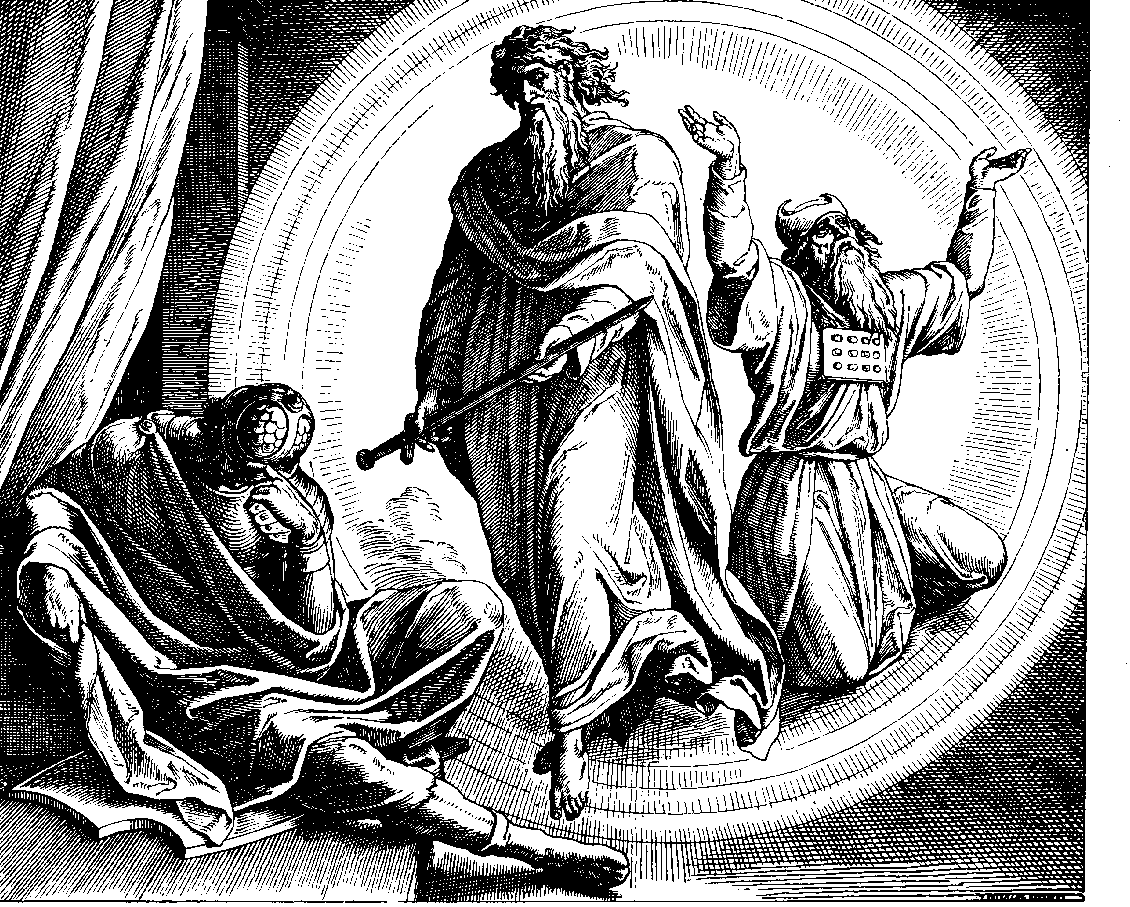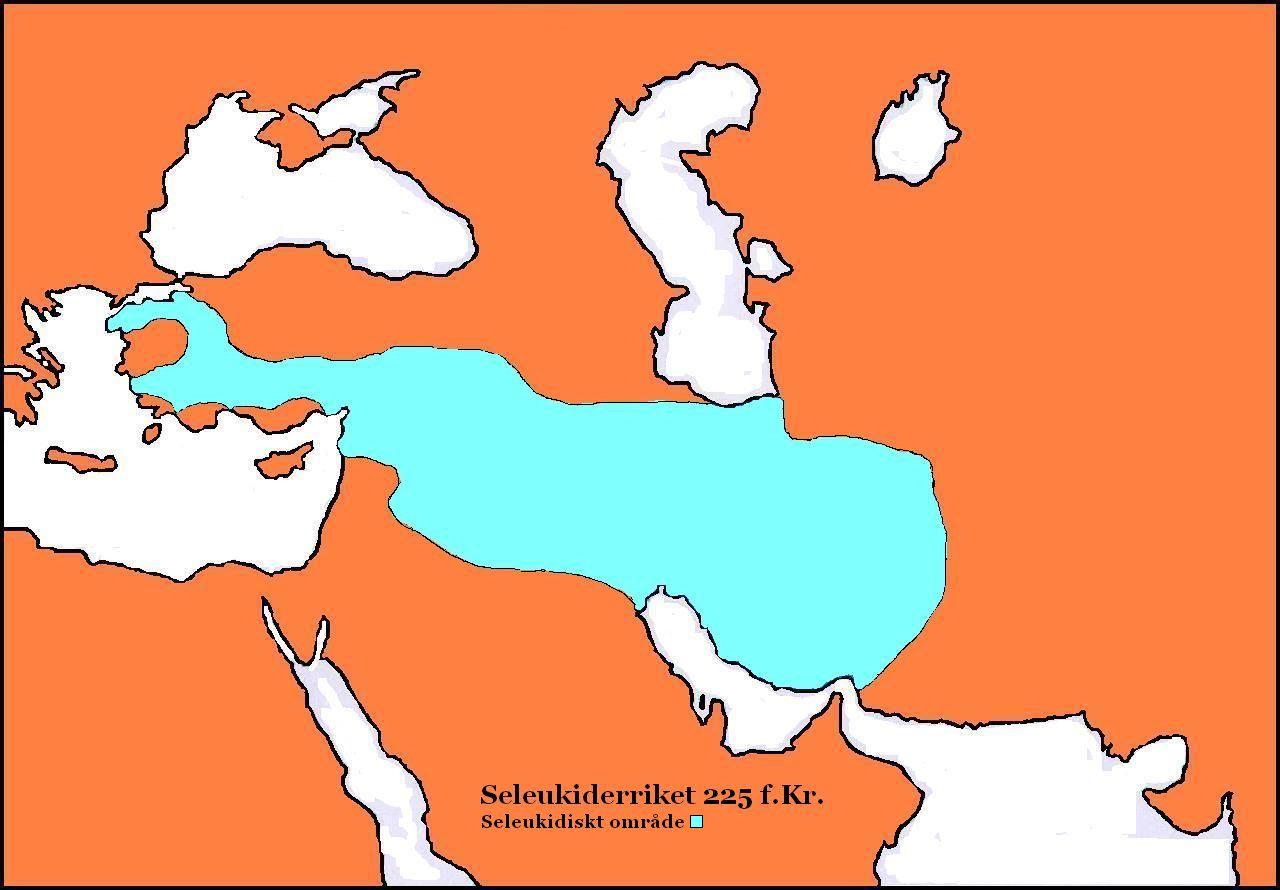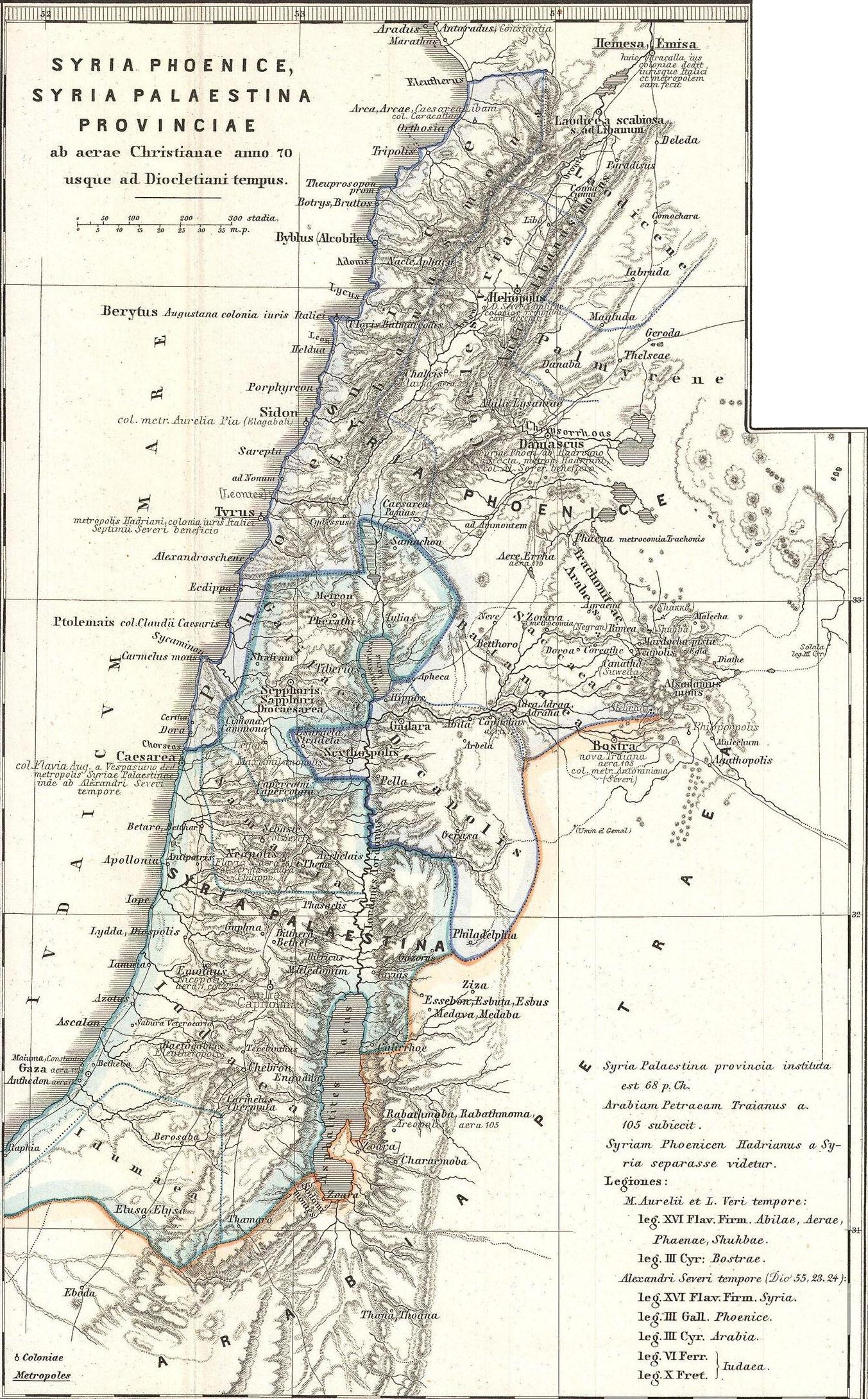|
Acra (citadel)
The Acra (also spelled Akra, from , ''Ḥaqra(h)''), with the meaning of "stronghold" (see under "Etymology"), was a place in Jerusalem thought to have had a fortified compound built by Antiochus Epiphanes, ruler of the Seleucid Empire, following his sack of the city in 168 BCE. The name Acra was also used at a later time for a city quarter probably associated with the by-then destroyed fortress, known in his time to Josephus (1st century CE) as both Acra and "the lower city". The fortress played a significant role in the events surrounding the Maccabean Revolt, which resulted in the formation of the Hasmonean Kingdom. The "upper city" was captured by Judas Maccabeus, with the Seleucid garrison taking refuge in the "Acra" below, and the task of destroying this last enemy stronghold inside Jerusalem fell to Simon Maccabeus surnamed Thassi. Knowledge about the Acra is based almost exclusively on the writings of Josephus, which are of a later date, and on the First and Sec ... [...More Info...] [...Related Items...] OR: [Wikipedia] [Google] [Baidu] |
Givati Parking Lot Dig
The Givati Parking Lot dig (also called Wadi Hilwa Square) is an archaeological excavation located in Silwan in advance of building project commissioned by the El'ad Association. It is adjacent to the City of David archaeological site. The dig was conducted by Doron Ben-Ami and Yana Tchekhanovets of the Israel Antiquities Authority and underwritten by the City of David Foundation. While the IAA conducts the excavations, the project and site is managed by El'ad. Location In the 1970s the Jerusalem Municipality seized land in Silwan in East Jerusalem to create a parking lot for visitors. The site is located in Wadi Hilweh, a Palestinian neighbourhood of Silwan, and is close to the Western Wall. The area has undergone a process of Judaization with Hebrew names replacing Arabic names: Silwan was renamed Kfar Hashiloah and the Wadi Hilwa Square was renamed the Givati Parking Lot. History of the excavations In the 1990s the El'ad Association began planning to build in the area ... [...More Info...] [...Related Items...] OR: [Wikipedia] [Google] [Baidu] |
Second Book Of Maccabees
2 Maccabees, also known as the Second Book of Maccabees, Second Maccabees, and abbreviated as 2 Macc., is a deuterocanonical book which recounts the persecution of Jews under King Antiochus IV Epiphanes and the Maccabean Revolt against him. It concludes with the defeat of the Seleucid Empire general Nicanor in 161 BC by Judas Maccabeus, the leader of the Maccabees. 2 Maccabees was originally written in Koine Greek by an unknown diaspora Jew living in Hellenistic Egypt. It was likely written some time between 150 and 100 BC. Together with the book 1 Maccabees, it is one of the most important sources on the Maccabean Revolt. The work is not a sequel to 1 Maccabees but rather its own independent rendition of the historical events of the Maccabean Revolt. It both starts and ends its history earlier than 1 Maccabees, beginning with an incident with the Seleucid official Heliodorus attempting to tax the Second Temple in 178 BC, and ending with the Battle of Adasa in 161 BC. Some ... [...More Info...] [...Related Items...] OR: [Wikipedia] [Google] [Baidu] |
Antiochus III The Great
Antiochus III the Great (; , ; 3 July 187 BC) was the sixth ruler of the Seleucid Empire, reigning from 223 to 187 BC. He ruled over the region of Syria and large parts of the rest of West Asia towards the end of the 3rd century BC. Rising to the throne at the age of eighteen in April/June 223 BC, his early campaigns against the Ptolemaic Kingdom were unsuccessful, but in the following years Antiochus gained several military victories and substantially expanded the empire's territory. His traditional designation, ''the Great'', reflects an epithet he assumed. He also assumed the title ''Basileus Megas'' (Greek for ' Great King'), the traditional title of the Persian kings. A militarily active ruler, Antiochus restored much of the territory of the Seleucid Empire, before suffering a serious setback, towards the end of his reign, in his war against the Roman Republic. Declaring himself the "champion of Greek freedom against Roman domination", he waged a four-year war against Rome ... [...More Info...] [...Related Items...] OR: [Wikipedia] [Google] [Baidu] |
Ptolemaic Egypt
Ptolemaic is the adjective formed from the name Ptolemy, and may refer to: Pertaining to the Ptolemaic dynasty * Ptolemaic dynasty, the Macedonian Greek dynasty that ruled Egypt founded in 305 BC by Ptolemy I Soter *Ptolemaic Kingdom Pertaining to a certain ancient writer *Relating to Ptolemy Claudius Ptolemy (; , ; ; – 160s/170s AD) was a Greco-Roman mathematician, astronomer, astrologer, geographer, and music theorist who wrote about a dozen scientific treatises, three of which were important to later Byzantine science, Byzant ..., 2nd-century AD geographer and astronomer/astrologer * Ptolemaic system, a geocentric model of the universe developed in detail by the astronomer Claudius Ptolemaeus See also * Ptolemy (name) {{disambig ... [...More Info...] [...Related Items...] OR: [Wikipedia] [Google] [Baidu] |
Coele-Syria
Coele-Syria () was a region of Syria in classical antiquity. The term originally referred to the "hollow" Beqaa Valley between the Lebanon and the Anti-Lebanon mountain ranges, but sometimes it was applied to a broader area of the region of Syria. The area is now part of modern-day Syria and Lebanon. Name It is widely accepted that the term Coele is a transcription of Aramaic ܟܠ ''kul'' , such that the term originally identified ''all'' of Syria.A History of the Jews and Judaism in the Second Temple Period, Volume 2, Lester L. Grabbe, p173 "Yet the suggestion is widely accepted that the name actually derives from Aramaic for "all Syria", which was then assimilated by the Greeks to a more usual pattern for place names" The word "Coele", with ... [...More Info...] [...Related Items...] OR: [Wikipedia] [Google] [Baidu] |
Alexander The Great
Alexander III of Macedon (; 20/21 July 356 BC – 10/11 June 323 BC), most commonly known as Alexander the Great, was a king of the Ancient Greece, ancient Greek kingdom of Macedonia (ancient kingdom), Macedon. He succeeded his father Philip II of Macedon, Philip II to the throne in 336 BC at the age of 20 and spent most of his ruling years conducting Wars of Alexander the Great, a lengthy military campaign throughout West Asia, Western Asia, Central Asia, parts of South Asia, and ancient Egypt, Egypt. By the age of 30, he had created one of the List of largest empires, largest empires in history, stretching from History of Greece, Greece to northwestern History of India, India. He was undefeated in battle and is widely considered to be one of history's greatest and most successful military commanders. Until the age of 16, Alexander was tutored by Aristotle. In 335 BC, shortly after his assumption of kingship over Macedon, he Alexander's Balkan campaign, campaigned in the Bal ... [...More Info...] [...Related Items...] OR: [Wikipedia] [Google] [Baidu] |
Yonathan Ben Uziel
Jonathan (, Standard: ''Yehōnatan''/''Yōnatan'', Tiberian: ''Yŏhōnāṯān''/''Yōnāṯān'') is a common name given to males which means "YHWH has given" in Hebrew. The earliest known use of the name was in the Bible; one Jonathan was the son of King Saul, a close friend of David. Variants of Jonathan include Jonatan, Djonathan. Biblical variants include Yehonathan, Y'honathan, Yhonathan, Yonathan, Yehonatan, Yonatan, Yonaton, Yonoson, Yeonoson or Yehonasan. In Israel, "Yoni" is a common nickname for ''Yonatan'' (Jonathan) in the same way Jonny is in English. The name was the 31st-most-popular boys' name in the United States in 2011, according to the SSA.Popularly Baby Names Social Security Online List of alternatives * , جوناثان * * |
Acropolis Of Athens
The Acropolis of Athens (; ) is an ancient citadel located on a rocky outcrop above the city of Athens, Greece, and contains the remains of several Ancient Greek architecture, ancient buildings of great architectural and historical significance, the most famous being the Parthenon. The word ''Acropolis'' is . The term acropolis is generic and there are many other acropoleis in Greece. During ancient times the Acropolis of Athens was also more properly known as Cecropia, after the legendary serpent-man Cecrops I, Cecrops, the supposed first Athenian king. While there is evidence that the hill was inhabited as early as the 4th millennium BC, it was Pericles (–429 BC) in the fifth century BC who coordinated the construction of the buildings whose present remains are the site's most important ones, including the Parthenon, the Propylaia_(Acropolis_of_Athens), Propylaea, the Erechtheion and the Temple of Athena Nike. The Parthenon and the other buildings were seriously damaged during ... [...More Info...] [...Related Items...] OR: [Wikipedia] [Google] [Baidu] |
Ptolemaic Baris
The Ptolemaic Baris (also Ptolemaic Acra) was a citadel maintained by Ptolemaic Egypt during its rule of Jerusalem in the 3rd century BC. Described by only a few ancient sources, no archaeological remains of the citadel have been found and much about it remains a matter of conjecture. Possible Persian origins After the conquest of Babylon by the Persian Empire, Cyrus the Great allowed the exiled part of the Jewish population to return to their native land and rebuild Jerusalem, sacked by Nebuchadnezzar II in 586 BC. While rebuilding the city's fortifications, the Persian administration also constructed a new citadel north of the Temple Mount enclosure, as part of a general Persian effort to bolster the empire's defences. This citadel is the ''Birah'' (Hebrew: בירה) referred to in , appearing as the ''Baris'' in Greek translations of the Septuagint. The origin of the word is not entirely clear, but may have been borrowed into Hebrew from Assyrian ''birtu'' or ''bistu'' meaning ... [...More Info...] [...Related Items...] OR: [Wikipedia] [Google] [Baidu] |
Ancient Greek
Ancient Greek (, ; ) includes the forms of the Greek language used in ancient Greece and the classical antiquity, ancient world from around 1500 BC to 300 BC. It is often roughly divided into the following periods: Mycenaean Greek (), Greek Dark Ages, Dark Ages (), the Archaic Greece, Archaic or Homeric Greek, Homeric period (), and the Classical Greece, Classical period (). Ancient Greek was the language of Homer and of fifth-century Athens, fifth-century Athenian historians, playwrights, and Ancient Greek philosophy, philosophers. It has contributed many words to English vocabulary and has been a standard subject of study in educational institutions of the Western world since the Renaissance. This article primarily contains information about the Homeric Greek, Epic and Classical periods of the language, which are the best-attested periods and considered most typical of Ancient Greek. From the Hellenistic period (), Ancient Greek was followed by Koine Greek, which is regar ... [...More Info...] [...Related Items...] OR: [Wikipedia] [Google] [Baidu] |
Location
In geography, location or place is used to denote a region (point, line, or area) on Earth's surface. The term ''location'' generally implies a higher degree of certainty than ''place'', the latter often indicating an entity with an ambiguous boundary, relying more on human or social attributes of place identity and sense of place than on geometry. A populated place is called a '' settlement''. Types Locality A locality, settlement, or populated place is likely to have a well-defined name but a boundary that is not well defined, but rather varies by context. London, for instance, has a legal boundary, but this is unlikely to completely match with general usage. An area within a town, such as Covent Garden in London, also almost always has some ambiguity as to its extent. In geography, location is considered to be more precise than "place". Relative location A relative location, or situation, is described as a displacement from another site. gta6 Absolute location An absolu ... [...More Info...] [...Related Items...] OR: [Wikipedia] [Google] [Baidu] |
Temple Mount
The Temple Mount (), also known as the Noble Sanctuary (Arabic: الحرم الشريف, 'Haram al-Sharif'), and sometimes as Jerusalem's holy esplanade, is a hill in the Old City of Jerusalem, Old City of Jerusalem that has been venerated as a Sacred space, holy site for thousands of years, including in Judaism, Christianity and Islam. The present site is a flat plaza surrounded by retaining walls (including the Western Wall), which were originally built by Herod the Great, King Herod in the first century BCE for an expansion of the Second Temple, Second Jewish Temple. The plaza is dominated by two monumental structures originally built during the Rashidun and early Umayyad Caliphate, Umayyad caliphates after Siege of Jerusalem (636–637), the city's capture in 637 CE:Nicolle, David (1994). ''Yarmuk AD 636: The Muslim Conquest of Syria''. Osprey Publishing. the main Qibli Mosque, praying hall of al-Aqsa Mosque and the Dome of the Rock, near the center of the hill, which was com ... [...More Info...] [...Related Items...] OR: [Wikipedia] [Google] [Baidu] |






